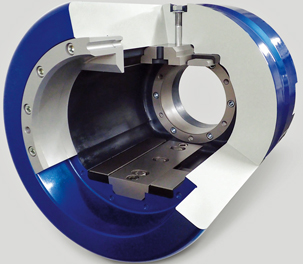Voith Launches FlexPad Intelligent Wear Protection for Joint Shaft Couplings
![]() Print this Article | Send to Colleague
Print this Article | Send to Colleague
 Voith, Germany, has introduced the first-to-market intelligent wear protection solution for joint shaft couplings. The Voith FlexPad Roll End Hub (REH) design increases hub body operational life by significantly reducing wear. End-customers benefit from this as they are able to significantly reduce their operational as well as maintenance cost by an average of approximately 20%.
Voith, Germany, has introduced the first-to-market intelligent wear protection solution for joint shaft couplings. The Voith FlexPad Roll End Hub (REH) design increases hub body operational life by significantly reducing wear. End-customers benefit from this as they are able to significantly reduce their operational as well as maintenance cost by an average of approximately 20%. Hub wear is a well-known issue for mill operators and it usually leads to an increased clearance between the hub and the roll end, which also affects the overall efficiency of the installed system. The vicious cycle of greater clearance turning into additional hub wear results in expensive downtime and re-machining for customers.
The Voith FlexPad solution eliminates the metal-to-metal contact, reduces wear, and ensures a longer lifetime of the hub. The principle behind the FlexPad is to decrease wear. It allows an area contact to the roll neck by slight flexibility of the roll neck contact partner. The line contact is transferred into area contact, which decreases stress on local hotspots significantly. The prevention of overload on the hub surface again protects the hub from wear as well as steadily increasing clearance and through that lowers the breakage risk of the hub.
Additionally, since the products are installed as modules, the FlexPad within the REH can be replaced as part of the general maintenance schedule, which additionally decreases rework and operational cost. This not only decreases downtime but also ensures a constant improvement in efficiency for overall maintenance processes. A safe and plannable operation between the scheduled maintenance stops is another valuable effect for customers.
The first field tests were conducted in late 2016 and have successfully proven the advantages of the installed system’s benefits. Currently, the system has been in operation and no unexpected problems where encountered, while the roll neck contact partners were replaced on the prospected six-month maintenance basis.


